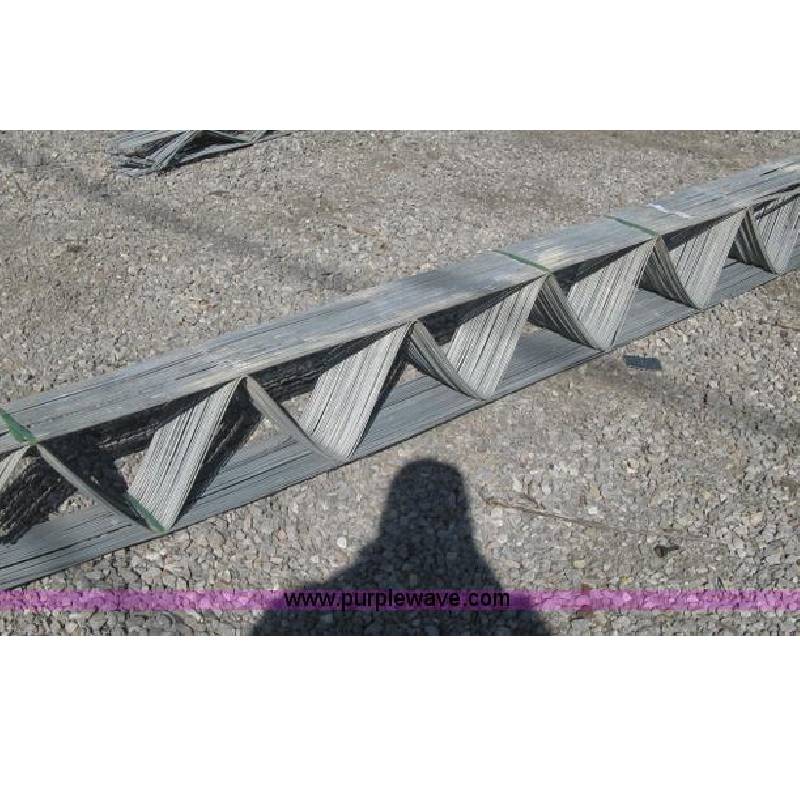
- Mobile Phone
- +8613931874955
- sales@cntcmetal.com
Factors Influencing the Expense of Installing Field Fencing for Agricultural Use
Understanding the Cost of Field Fencing A Comprehensive Guide
Field fencing serves as a critical component for agricultural, recreational, and property boundary needs. Whether you are looking to contain livestock, protect crops, or establish a clear property line, understanding the costs associated with field fencing is essential for planning and budgeting. This article outlines the various factors that influence the cost of field fencing, common materials used, and tips for making informed decisions.
Factors Influencing Cost
1. Material Choice The type of fencing material you choose significantly affects the overall cost. Common materials include woven wire, barbed wire, electric fencing, and wooden fencing. For instance, while barbed wire is one of the most economical options for livestock containment, wooden fencing, albeit aesthetically pleasing, tends to be more expensive due to the cost of materials and installation.
2. Fencing Length and Height The dimensions of the area to be fenced are crucial. Larger areas require more materials, thus increasing costs. Additionally, the height of the fence can also add to the costs—taller fences require more materials and labor.
3. Labor Costs Depending on your own skill level and the complexity of the installation, you may need to hire professional help. Labor costs can vary based on geographic location and the contractor’s expertise. DIY installation can save money, but it's essential to weigh the time and effort required.
4. Terrain and Accessibility The nature of the ground where the fence will be installed plays a significant role in determining costs. Rocky, uneven, or heavily wooded areas may require more specialized tools and additional labor to prepare the site for fencing.
5. Gates and Accessories Many fencing projects require gates and other accessories, such as braces and anchors, which can add significant costs. Choosing the right type of gate and ensuring it is suitable for your specific needs is an important consideration in the budget.
6. Maintenance and Longevity While it might be tempting to opt for the cheapest fencing option available, consider the long-term maintenance costs. Some materials require more upkeep than others. For example, wooden fences may need regular staining or treatment, while vinyl or metal fences may offer lower maintenance over time.
Common Materials and Their Costs
cost of field fence

- Woven Wire Fencing Popular for containing livestock, woven wire fencing typically costs between $1.50 and $3.00 per linear foot. It is durable and can withstand harsh conditions.
- Barbed Wire Fencing This economical option usually ranges from $0.10 to $0.50 per linear foot. It is effective for keeping livestock in designated areas but may not be suitable for all types of animals.
- Electric Fencing The initial setup cost can be higher, typically between $1.00 and $2.50 per linear foot. However, electricity can be a deterrent to animals, making it a practical choice for temporary or rotating grazing.
- Wooden Fencing While this offers an attractive look, the cost can range from $3
.00 to $12.00 per linear foot, depending on the type of wood used and the design of the fence.Budgeting Tips
1. Get Multiple Quotes If hiring a contractor, solicit multiple quotes to ensure you are getting a fair deal.
2. Consider DIY If you have the time and skills, consider taking on the project yourself to save on labor costs.
3. Invest in Quality Rather than going for the cheapest option, consider investing in quality materials that provide durability and longevity.
4. Plan for Maintenance Factor in the long-term costs associated with fence upkeep. Sometimes paying a little more now can save money in the future.
In conclusion, understanding the cost of field fencing requires careful consideration of various factors, from the materials chosen to the specific site conditions. By educating yourself and planning accordingly, you can ensure your fencing project meets your needs and fits within your budget.
share:
-
Yard Sign Stakes: Reliable Guardians of Outdoor SignsNewsAug.04,2025
-
Wall Ties: Invisible Guardians of Building StabilityNewsAug.04,2025
-
Resilient Web: The Super Guardian Power of Concrete MeshNewsAug.04,2025
-
Masonry Accessories: A versatile assistant on building foundationsNewsAug.04,2025
-
Iron Binding Wire: the 'invisible reinforcement specialist' in the fields of architecture and industryNewsAug.04,2025
-
Dynamic Spring: The diverse functions and excellent performance of Wire Tension SpringNewsAug.04,2025
-
Your Source for Concrete Wall Ties and Masonry AccessoriesNewsJul.10,2025



















